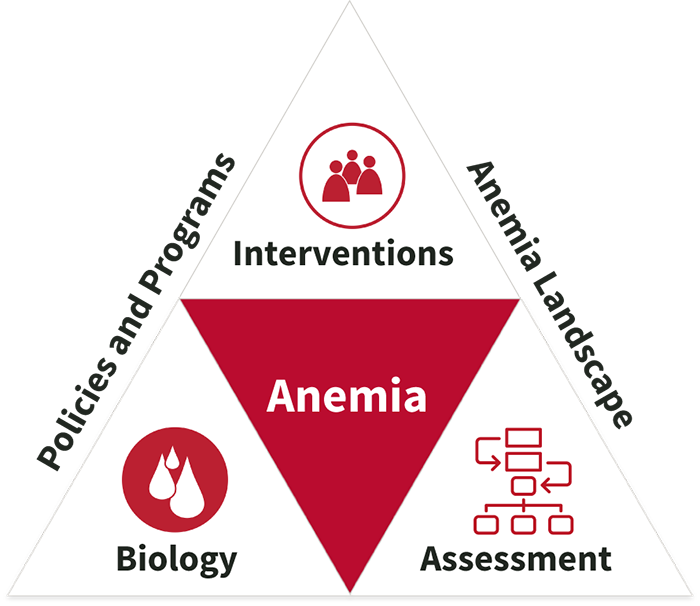Anemia is a public health concern disproportionately affecting young children, pregnant women, and women of reproductive age. The Global Burden of Disease Study estimates that iron deficiency anemia and thalassemia are the leading anemia causes worldwide.
While anemia is prevalent around the world, the underlying causes differ among different populations and regions. A “one size fits all” approach does not exist, and implementation of strategies to reduce anemia depend on the main causes of anemia, and the financial and technical capacity of each country.
We found 93 resource(s)
Inherited Blood Disorders|Global and Regional Prevalence
Literature Review published by Blood in
This study presents estimates for mild, moderate, and severe anemia from 1990 to 2010 for 187 countries, both sexes, and 20 age groups. The authors performed cause-specific attribution to 17 conditions using data from the Global Burden of Diseases, Injuries, and Risk Factors 2010 study.
International Conference on Nutrition (ICN) panel on Giving Iron to Children
Presentation/Poster published by ICN Panel on Giving Iron to Children in
These presentations, which were held at the International Conference on Nutrition (ICN) panel on Giving Iron to Children, cover a variety of topics, including iron supplementation for growth and development, as well as iron supplementation in the context of malaria exposure.
Success in Delivering Interventions to Reduce Maternal Anemia in Nepal: A Case Study of the Intensification of Maternal and Neonatal Micronutrient Program
Case Study published by A2Z: The USAID Micronutrient and Child Blindness Project in
This case study describes the development of the Iron Intensification Project in Nepal, its design, the implementation process at the district level, the strategy used to scale it up, the data available to describe coverage, and the reduction in maternal anemia in the country between 1998 and 2006. Lessons learned for sustaining and strengthening…
The Inherited Disorders of Hemoglobin: An Increasingly Neglected Health Burden
Literature Review published by Indian Journal of Medical Research in
This review presents current global estimates of common inherited hemoglobin disorders such as sickle cell anemia and ß-thalassemia, and highlights the lack of evidence and the need for further research and collaboration in this area.
Are We Making Progress on Reducing Anemia in Women? Cross-country Comparison of Anemia Prevalence, Reach, and Use of Antenatal Care and Anemia Reduction Interventions
Technical Report published by A2Z: The USAID Micronutrient and Child Blindness Project in
This report aims to assess the progress being made on reducing the burden of anemia in women and stimulate global and national action to improve the reach and delivery of proven anemia reduction interventions targeting pregnant women. Data from Demographic and Health Surveys conducted from 2004 to 2008 were used for cross-country and over-time…
Maternal Iron-Folic Acid Supplementation Programs: Evidence of Impact and Implementation
Literature Review published by Food and Nutrition Bulletin in
This review presents evidence on the impact on maternal mortality of iron–folic acid supplementation from observational studies that were analyzed for the Global Burden of Disease analysis in 2004, summarizes findings from other reviews on this topic, and presents data on anemia reduction from two large-scale national programs as well as factors…
Integrated Anemia Control Strategy Has Significantly Reduced Anemia in Women and Children in Nicaragua
Technical Report published by Micronutrient Initiative in
This report describes the Integrated Anemia Control Strategy (IACS), which was implemented in Nicaragua in 1994. The comprehensive strategy included supplementation for pregnant women and children under 5 years of age, periodic anthelminthic treatment for children, wheat flour fortification with iron and B vitamins, interventions to control…
Anaemia Prevention Badge Project
Technical Report published by FANTA in
This document described the Girl Guides Anemia Prevention Badge Project. In partnership with the African Regional Office of the World Association of Girl Guides and Girl Scouts, FANTA designed the Girl Guides Anemia Prevention Badge Project to reach adolescent girls in East and Southern Africa with information and activities on anemia prevention…



